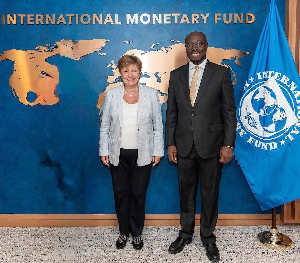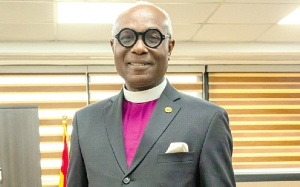The COVID-19 pandemic is having significant effects on the art market, as well as established and emerging artists.
Artists have now found themselves without commercial outlets for their work, as many galleries, auction houses, theatres, music venues and art fairs have shut down.
“It's a big challenge for now, especially to us artists. Very big, big, big challenge.” Cyrus Kabiru, a visual artist, tells Al Jazeera.
Kabiru was born in Nairobi where he currently lives and works. His intricate works push the boundaries of conventional craftsmanship, sculpture, fashion and design.
His work includes large-scale sculptures but also quite unusual masks or glasses that one can wear, installations and documentary films. He is one of Kenya’s leading artists and is putting East African art on the map.
“A lot of people, they didn't know about East African art,” he says. “People always talk about West African art, but we worked hard. Now, East African art is somewhere.”
Among a set of measures to help fight against COVID-19, Kenya’s government created a fund to alleviate the strain of the pandemic on the country’s artists. But some artists feel left out.
“As you can see there, the president gave 200 million Kenyan shillings ($1.87m) to the artists,” Kabiry says. “People thought these 200 million is for the visual artists. He meant artists who are musicians and performers like the comedians. He didn't mean visual artists like us.”
Due to the lockdown, most shops that specialise in art materials are now closed and visual artists, painters and sculptors are struggling to find materials essential to make art.
“I couldn't find canvas so literally like small things you would take for granted, that you’d get every day, are suddenly disappeared,” Elias Mung’ora, a Kenyan painter, tells Al Jazeera.
Mung’ora’s colourful paintings, photographs, drawings and other works are inspired by life in the urban spaces of Nairobi. He also makes intricate woodcut prints. But right now, he is struggling to exhibit and sell his work.
“Selling has completely gone down,” he says. “We were planning previously with my studio to do an open studio for showing small works in April and it’s obviously not going to happen.”
But it’s not only visual artists who are struggling. Performing arts have come face-to-face with an unprecedented challenge: they are only able to connect with their audience online, but not all of them have the technological capacity to do so.
“Public gatherings are the first thing that were banned. And as a result, gigs went out through the window,” Muthoni Drummer Queen, a Kenyan rapper, tells Al Jazeera.
“Gigs continue to be the mainstay of income for most performing artists and all their teams. So dancers, stylists, makeup artists, all this sort of people who are connected to the artist's performance.”
Muthoni has been paving the way for “alternative” artists in Kenya for years. She is a multi-talented artist and entrepreneur who has always pushed boundaries and fought hard for non-conformist performing artists to become an integral part of Kenya’s art world.
Gospel is arguably still the most popular genre of music, but with her catchy lyrics and rhythmic rap, Muthoni has captured the hearts of thousands.
Now, she has found a way to stay connected to her audience using the internet and a home set-up to preserve the visual and sound quality of her performances. But this solution could prove to be a challenge for other artists.
Without some degree of gear, it's not possible to give a good output online,” Muthoni explains. “And without a good output online, it's very difficult to maintain the attention of your fans or new fans. Artists and performers really rely on performance income to actually have money in their pocket.”
As more and more people under lockdown all over the world find refuge in art, Kenya’s booming art scene is struggling to persevere, with emerging and new artists suffering an even greater blow to their livelihoods.
“I imagine, like, if me, I feel that impact,” Cyrus Kabiru says. “What about the upcoming artists?”
This story was produced and edited by Al Jazeera NewsFeed’s Katya Bohdan in Doha, Qatar and filmed by Matteo Lonardi in Kenya.
Africa Entertainment News of Monday, 27 April 2020
Source: aljazeera.com













